Research Group & Theme
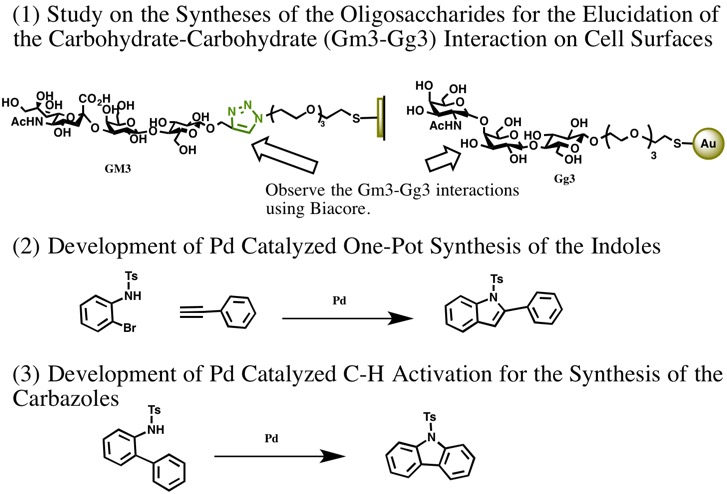
Laboratory of Organic Chemistry
- Prof. Haruo Yamada
Development of Pd(0) catalyzed one-pot synthesis of indoles based on N-H bonds activation : Pd(0) catalyzed one-pot synthesis of the indoles, which involves the Sonogashira Coupling of o-N-tosylamide with terminal alkynes, followed by N-H bond insertion of alkynes, has been developed. The Pd catalyzed one-pot reaction is applied to the synthesis of the hetrocyclic compounds.
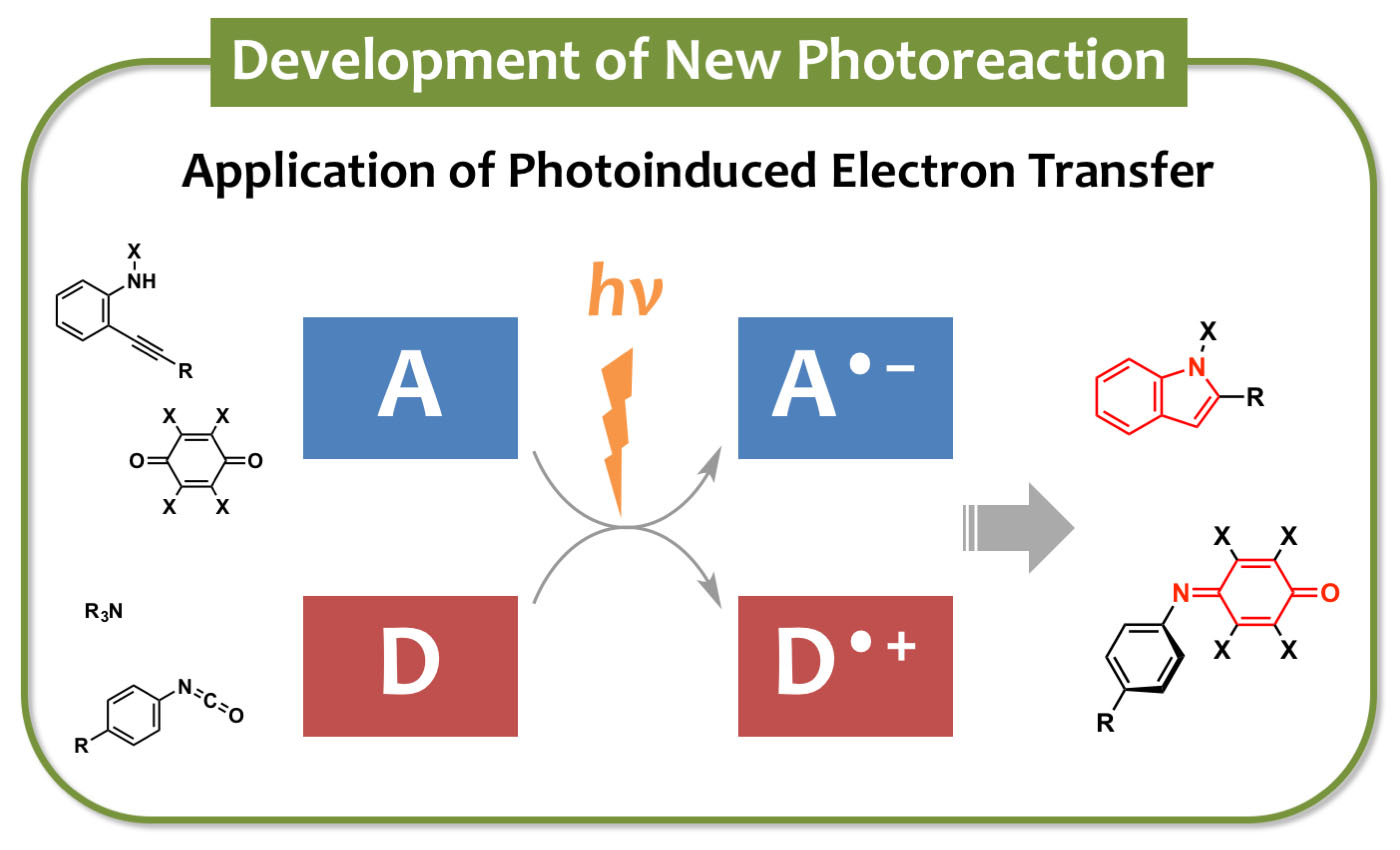
Laboratory of Organic Chemistry
- Associate Prof. Kan Wakamatsu
Development of new photoreaction using photoinduced electron transfer and its application : In connection with application of photoinduced electron transfer, we are currently working on (1) investigation of photochemical syntheses of indole derivatives, and (2) development of new photochemical synthetic methods for quinone imine dyes and their application.
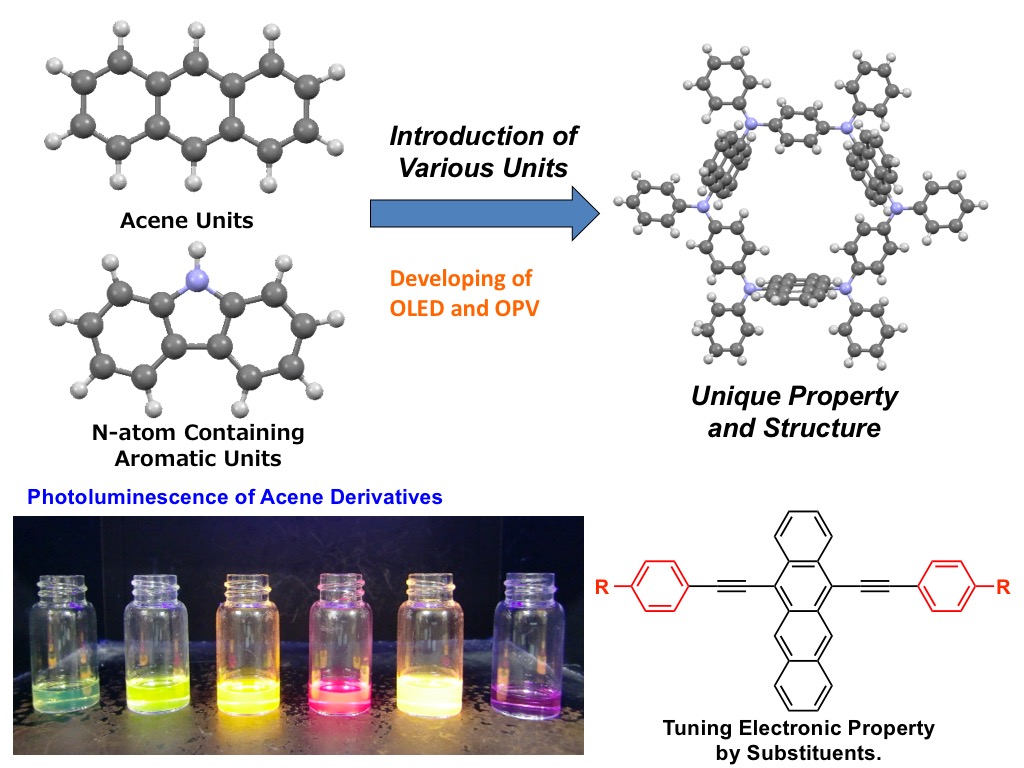
Laboratory of Organic Chemistry
- Associate Prof. Tetsuo Iwanaga
Construction and application of novel pi-electron system : To develop novel pi-electron system for organic materials, we synthesized some novel donor/acceptor arrays with aromatic bisimide and N-contain aromatic units, and we measured their properties and self-assembly abilities.
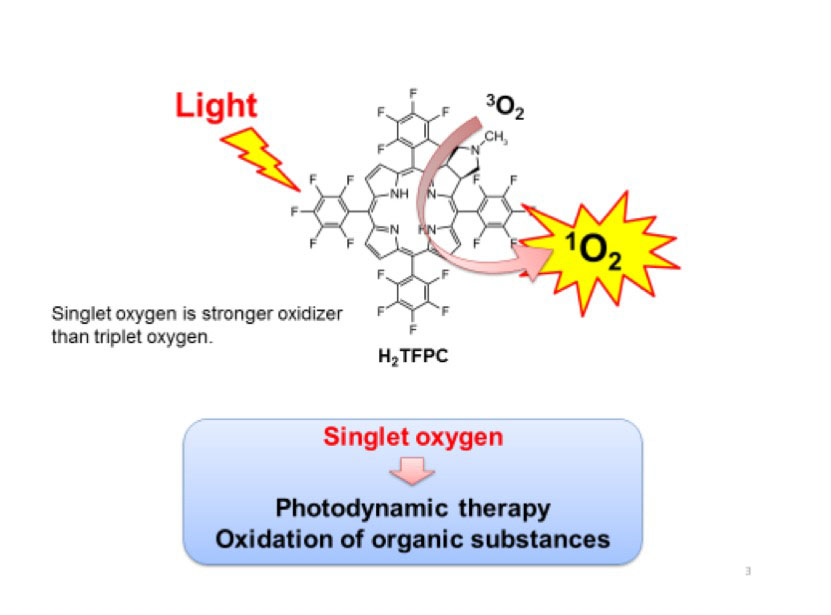
Laboratory of Inorganic and Solid Chemistry
- Prof. Haruo Akashi
Development of novel functional coordination compounds : I am working on development of new functional coordination compounds. Specially, I am interested in green oxidation processes in presence of sugar-conjugated fluorochlorin derivatives as new photosensitizers.
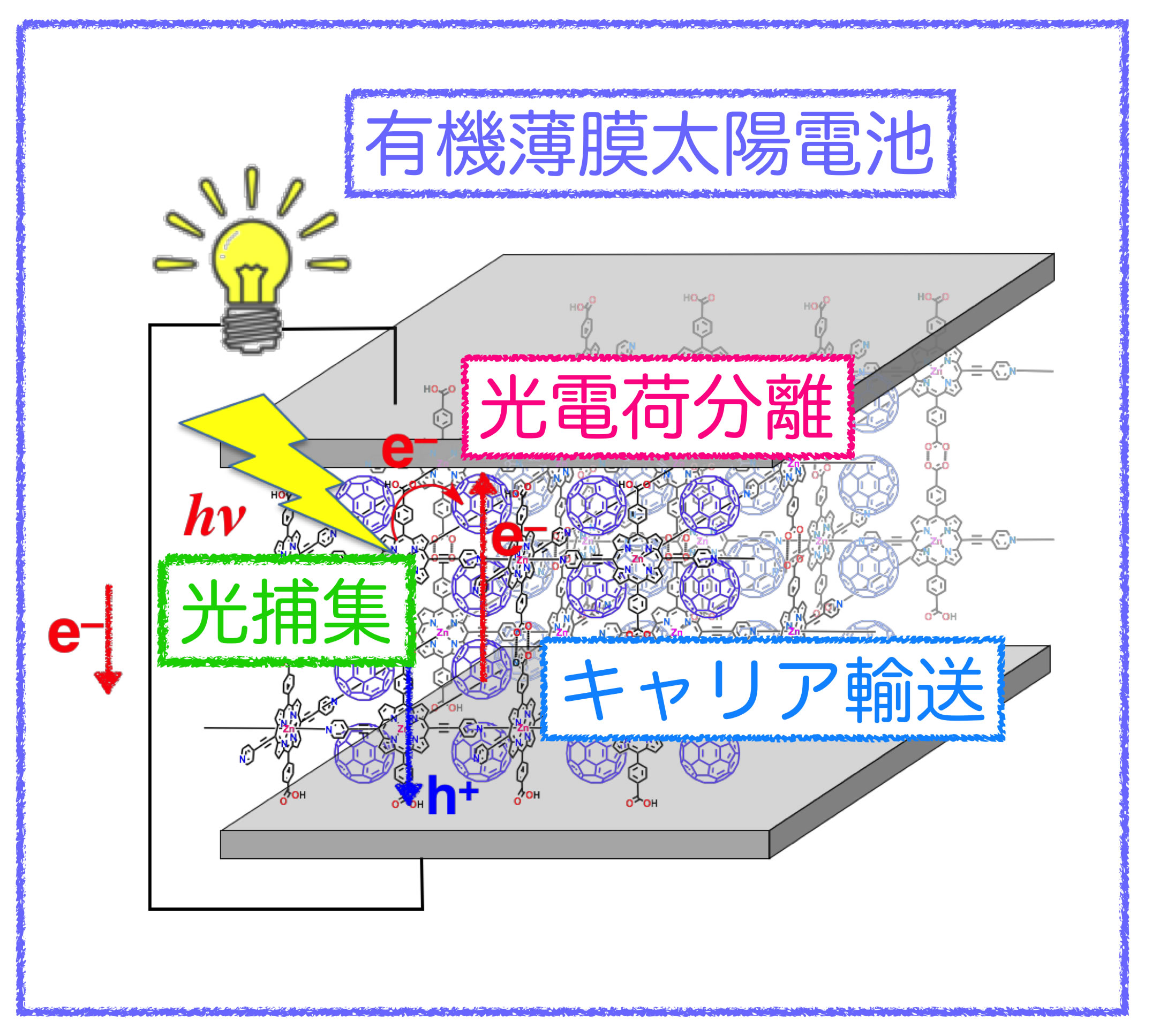
Laboratory of Inorganic and Solid Chemistry
- Prof. Minoru Mitsumi
Syntheses and evaluation of structure–property relationships of functional metal complexes exhibiting unique electronic properties. : We are studying on the development of functional materials showing electrical, magnetic and dielectric properties and optical functional materials that convert photo-energy into electric or chemical energy, based on metal complexes.
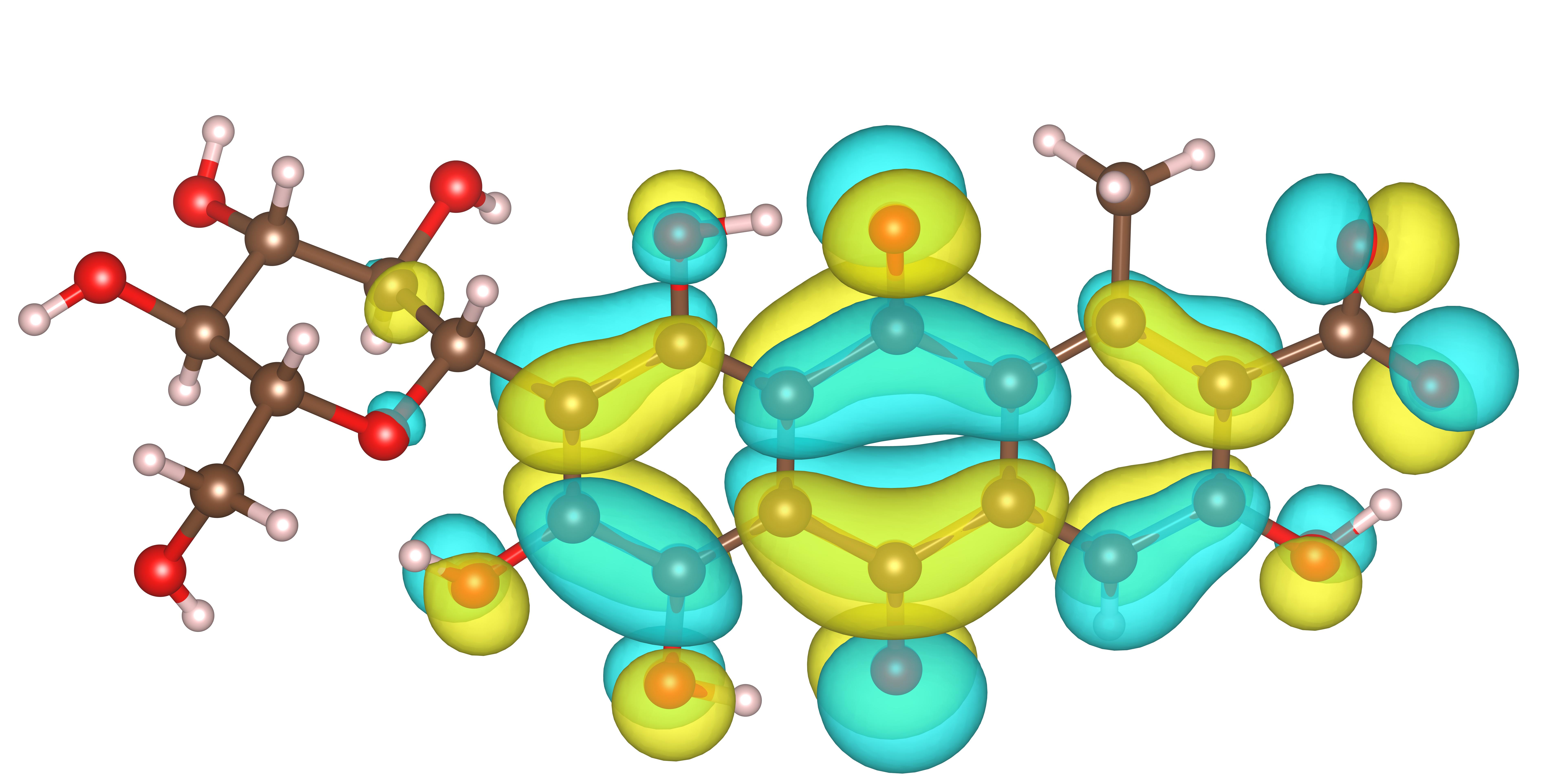
Laboratory of Inorganic and Solid Chemistry
- Prof. Genta Sakane
Creation of unique complexes containing commodity organic molecule : The purpose of our study is to examine the syntheses, structures, and electronic structures of unique complexes containing commodity organic molecules. Natural plant dyes and animal dyes are used as ligands.

Laboratory of Inorganic and Solid Chemistry
- Associate Prof. Yasushi Sato
Development and high-pure synthesis of new solid-state inorganic materials with excellent optical and electrical properties : The purpose of our study is to examine the syntheses, structures, and electronic structures of unique complexes containing commodity organic molecules. Natural plant dyes and animal dyes are used as ligands.
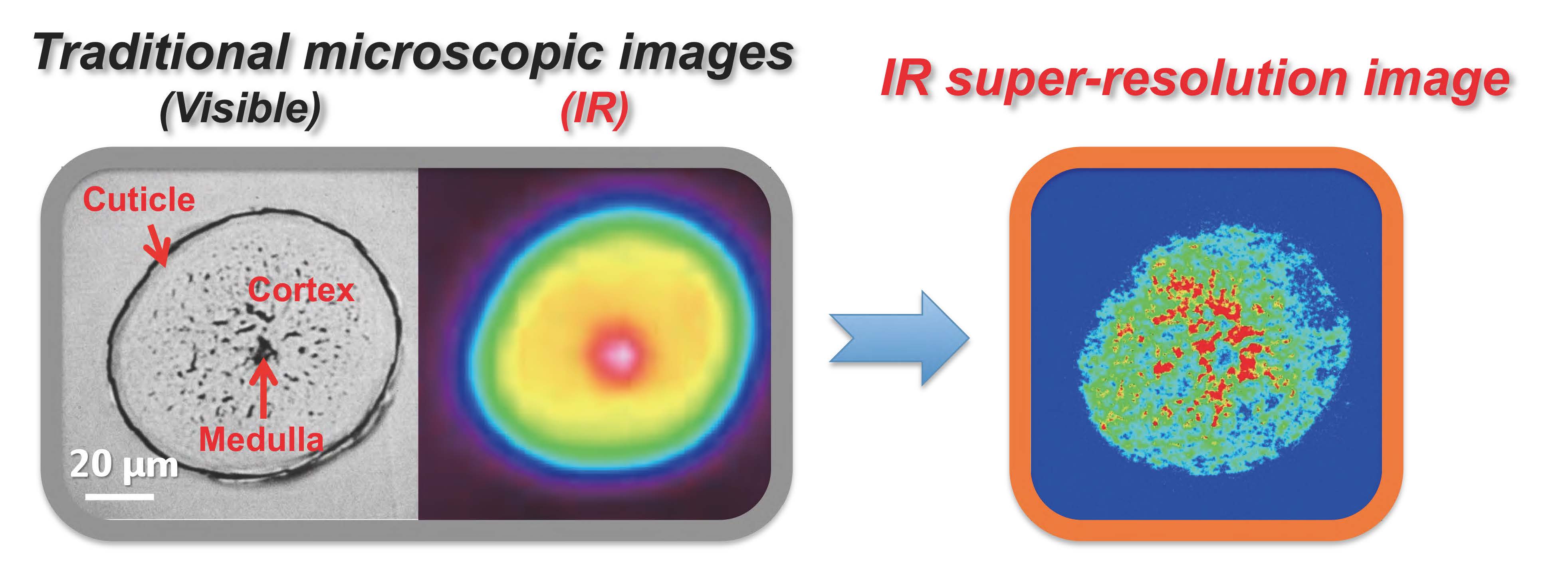
Laboratory of Physical Chemistry
- Prof. Makoto Sakai
IR super-resolution microscopy for biological samples : We have developed IR super-resolution microscope with a sub-micrometer spatial resolution by 2-color laser spectroscopy. By using this microscope, we can observe not only vibrational molecular images but also the molecular orientation and chirality images of biological samples.
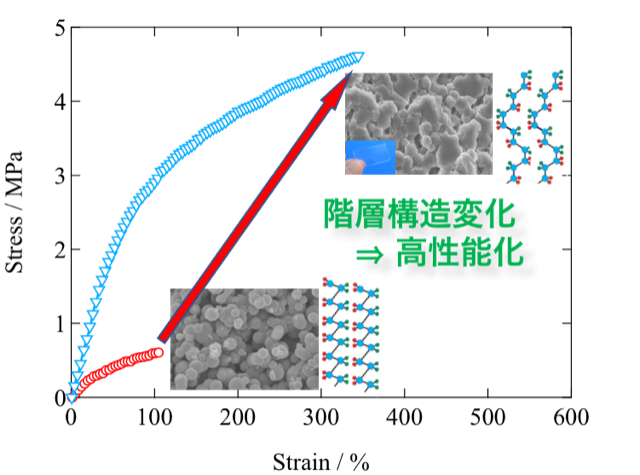
Laboratory of Physical Chemistry
- Associate Prof. Noboru Osaka
Emergence of novel physical properties and functions of polymers based on control of the hierarchical structures : By external force such as heat and mechanical force, we aim to emerge novel physical properties and functions of polymers based on control of the hierarchical strucures and to reveal the structure-property relationship.
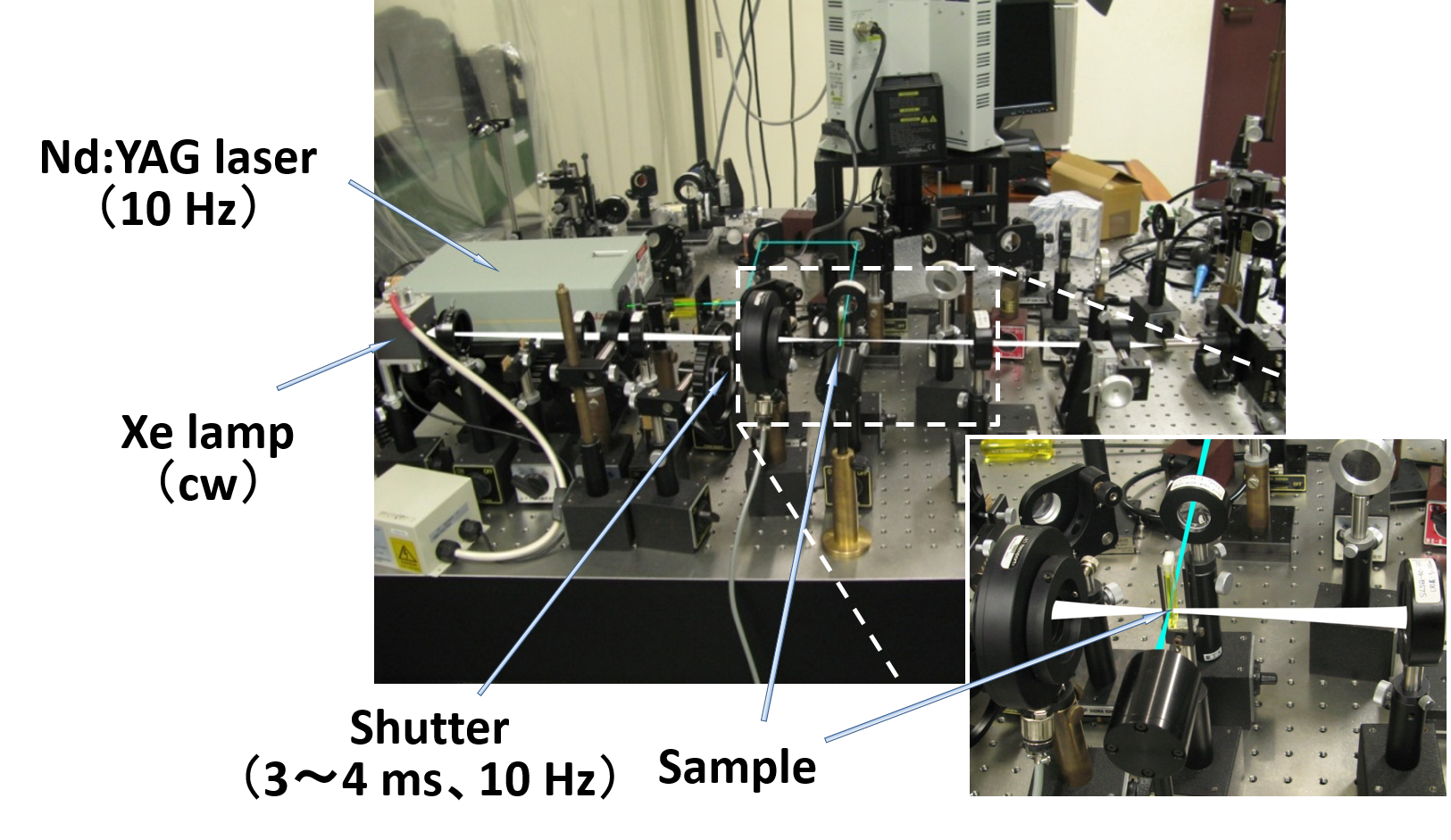
Laboratory of Physical Chemistry
- Assistant Prof. Hirona Takahashi
Transient absorption spectroscopy measures the changes in the absorbance of short-lived species generated by photo-irradiation, and gives us the information about molecular dynamic processes in materials or chemical compounds. Rate constants are also determined by measuring time-profiles of the concentration of excited molecules.
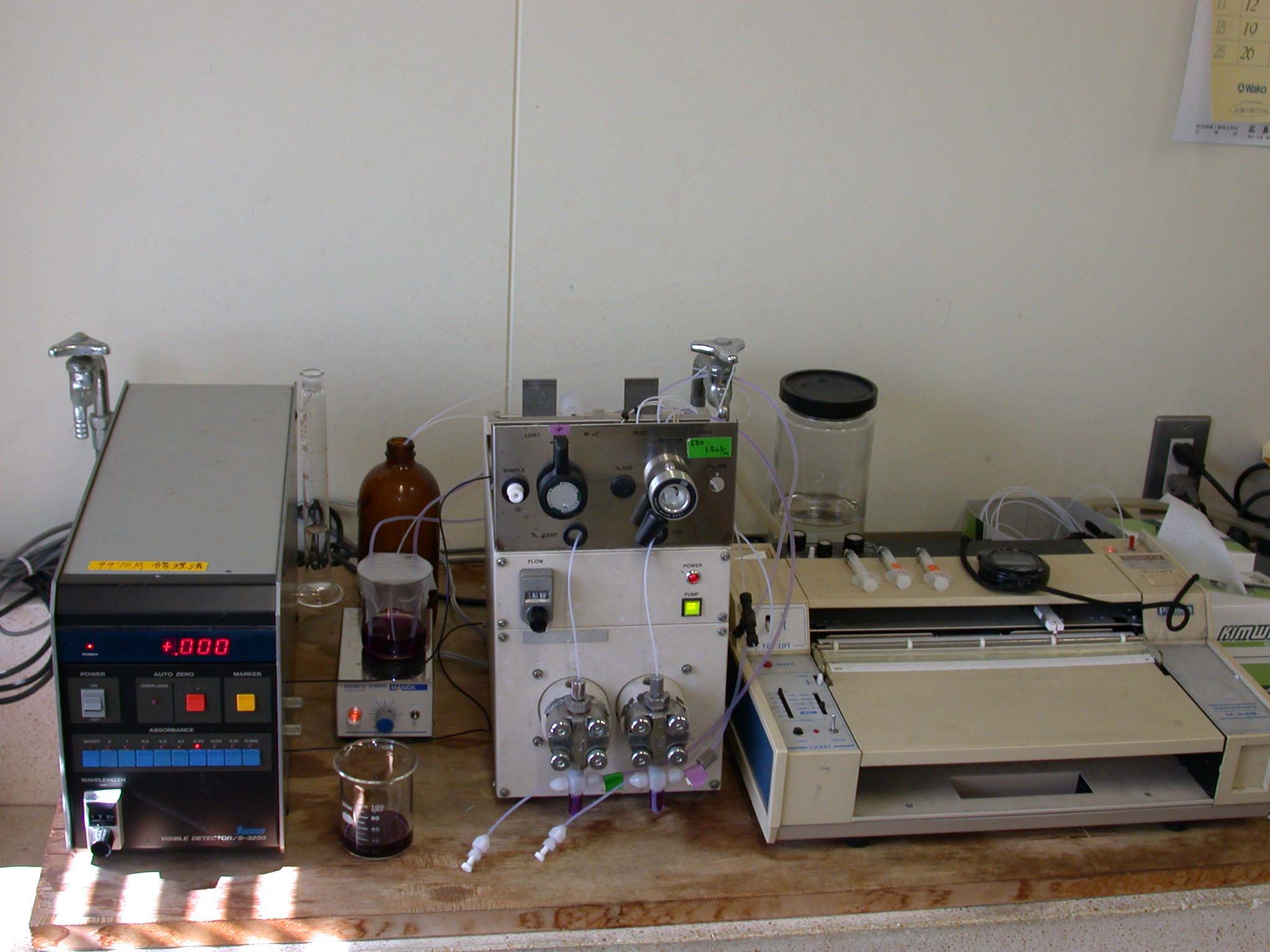
Laboratory of Analytical Chemistry
- Prof. Takashi Yokoyama
Development of new flow analysis : We develop flow injection analysis, sequential injection analysis, liquid chromatography, and capillary electrophoresis using new analytical reagents and novel separation materials.
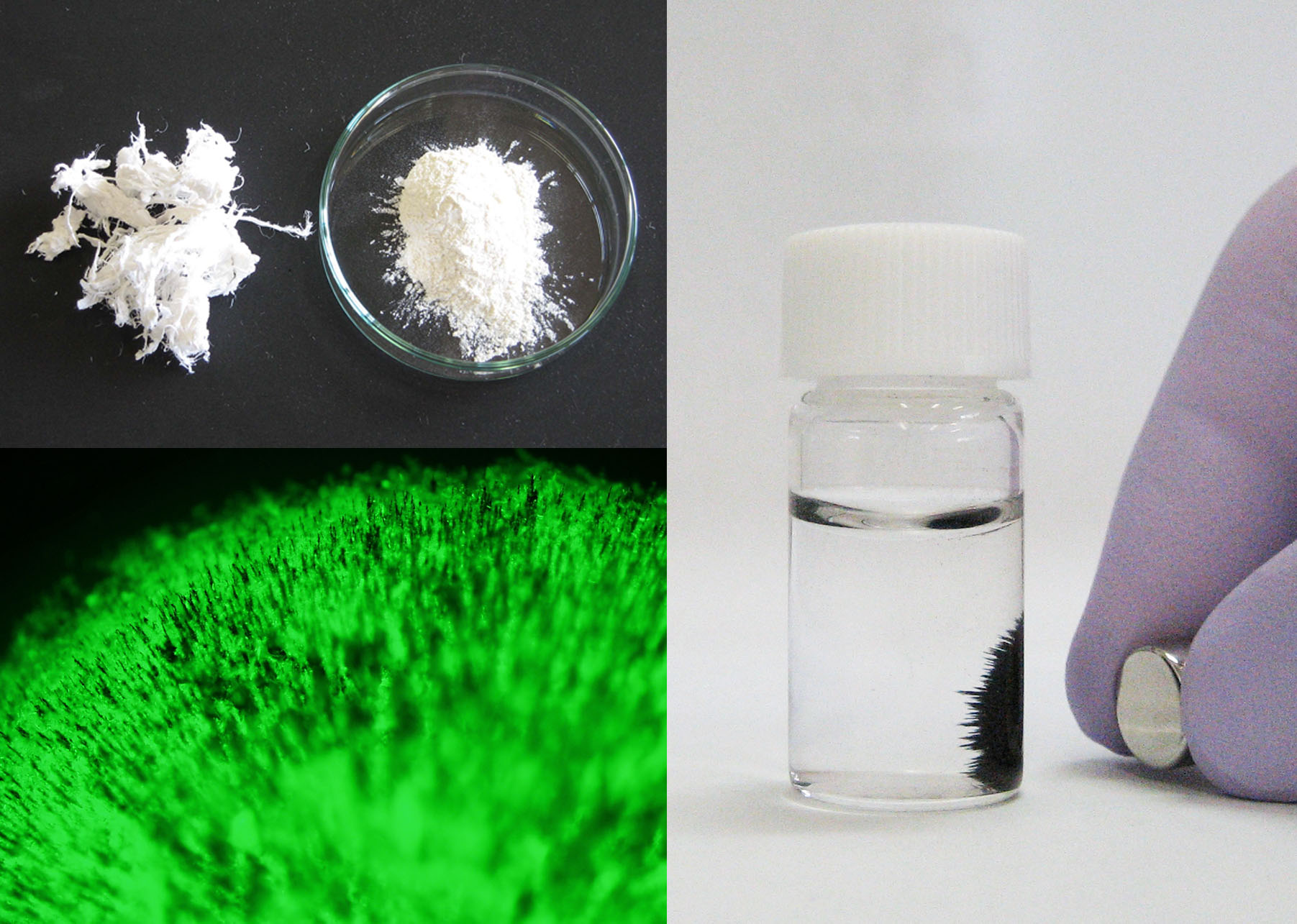
Laboratory of Analytical Chemistry
- Prof. Masanori Yamada
Utilization of biopolymer as an environmental material : DNA can be purified from either salmon milts, which are generally discarded as waste around the world. In this laboratory, we have demonstrated the utilization of DNA as an environmental material. As a result, DNA could selectively accumulate the planar structure-containing harmful compounds, rare-earth and heavy metal ions, and formaldehyde.
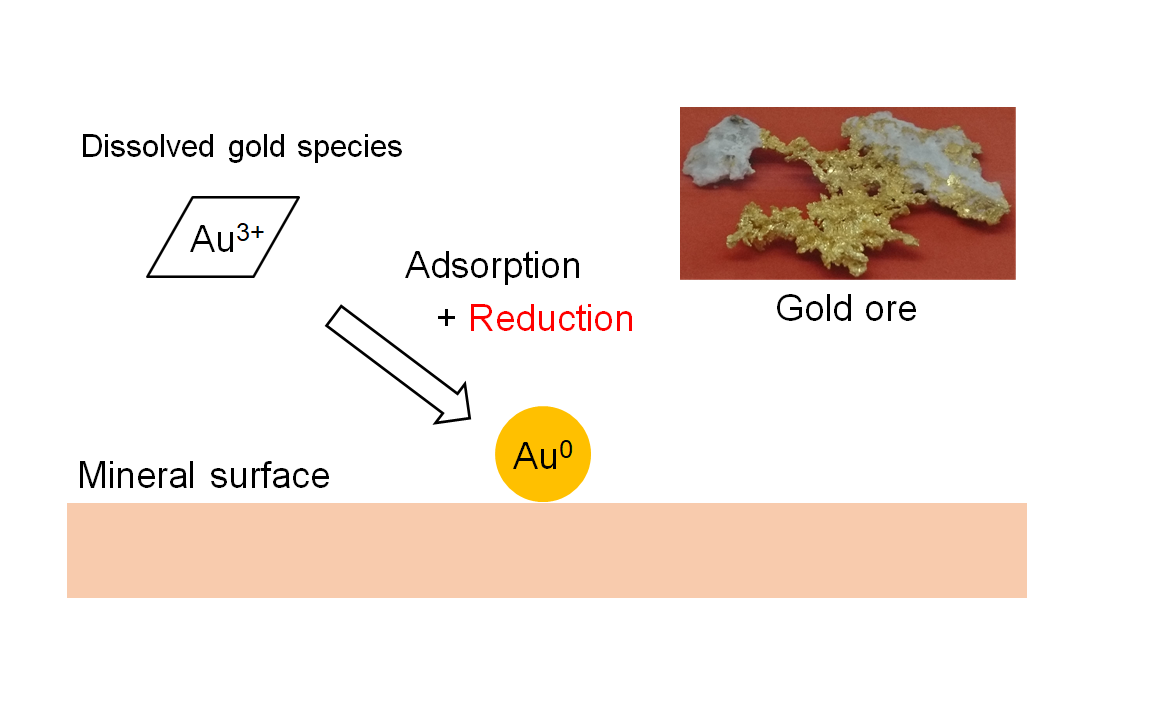
Laboratory of Analytical Chemistry
- Lecturer Daisuke Kawamoto
Elucidation of Mechanism of Solid-Liquid Interfacial Reaction: One of the factors affecting migration behavior of elements in hydrosphere is "adsorption of dissolved species on mineral surface". In recent years, it has been reported that various reactions to the adsorbed species occur. I aim to elucidate the mechanism of the reaction.
Lecture
Synthetic Organic Chemistry
The aim of this lecture is to help students understand basic concepts of organic synthesis including C-C bond formation, transformation, protective groups, how to control asymmetric centers. All students acquire the advanced reaction knowledge and skills required for the organic synthesis.
Organic Reaction Mechanisms
This lecture course explains and discusses several organic reactions with the orbital concepts, and the aim is to help students in understanding organic reactions logically. For the help of understanding, the MO calculation program "Gaussian" will be used to visualize orbital interaction.
Structural Organic Chemistry
This class will teach the physical and chemical properties of various organic molecules and the correlation of properties and structure of molecules. The structure and intermolecular interaction of supramolecules will also be discussed.
Coordination Chemistry I
The aim of this course is to help students acquire an understanding of the advanced coordination chemistry. In addition, this course introduces the foundation of organometallic chemistry and biocoordination chemistry.
Solid-State Chemistry
This course introduces the band theory and the crystallography which are important for understanding the solid-state chemistry. This course also introduces the fundamentals and applications of semiconductors, metals, ferromagnets, and ferroelectrics etc.
Coordination Chemistry II
The aim of this course is to help students acquire an understanding of the advanced coordination chemistry. This course introduces the foundations of quantum chemistry require to analyze Mulliken population.
Crystal Chemistry of Inorganic Solids
The aim of this course is to help students acquire an understanding of solid-state inorganic materials in viewpoints of crystallography and thermodynamics.
Laser Spectroscopy for Chemistry
The course teaches the fundamentals of quantum chemistry and its applications to biological systems, including the electronic structures and spectroscopic properties of biological molecules. This course also provides a brief introduction to advanced laser spectroscopies for chemistry.
Polymer Physical Chemistry
The main aims of this course are to review polymer physical chemistry based on hierarchical structures, structure-properties relationship, and structural analysis of polymers.
Environmental Analytical Chemistry
For various environmental pollutants, behaviors in environment, analytical methods, principles of detection, inaccuracy of measurement, sampling, monitoring, portable analytical methods, environmental inquiries, practical measurements and development of analytical methods, are reviewed.
Biomaterial Chemistry
Large amount of biopolymers, such as polysaccharide, protein, nucleic acid, and natural rubber, are present in natural world. This course introduces students to the structure and property of biopolymer. Additionally, it also explains the utilization of biopolymer for biomedical, bioengineering, and environmental materials.